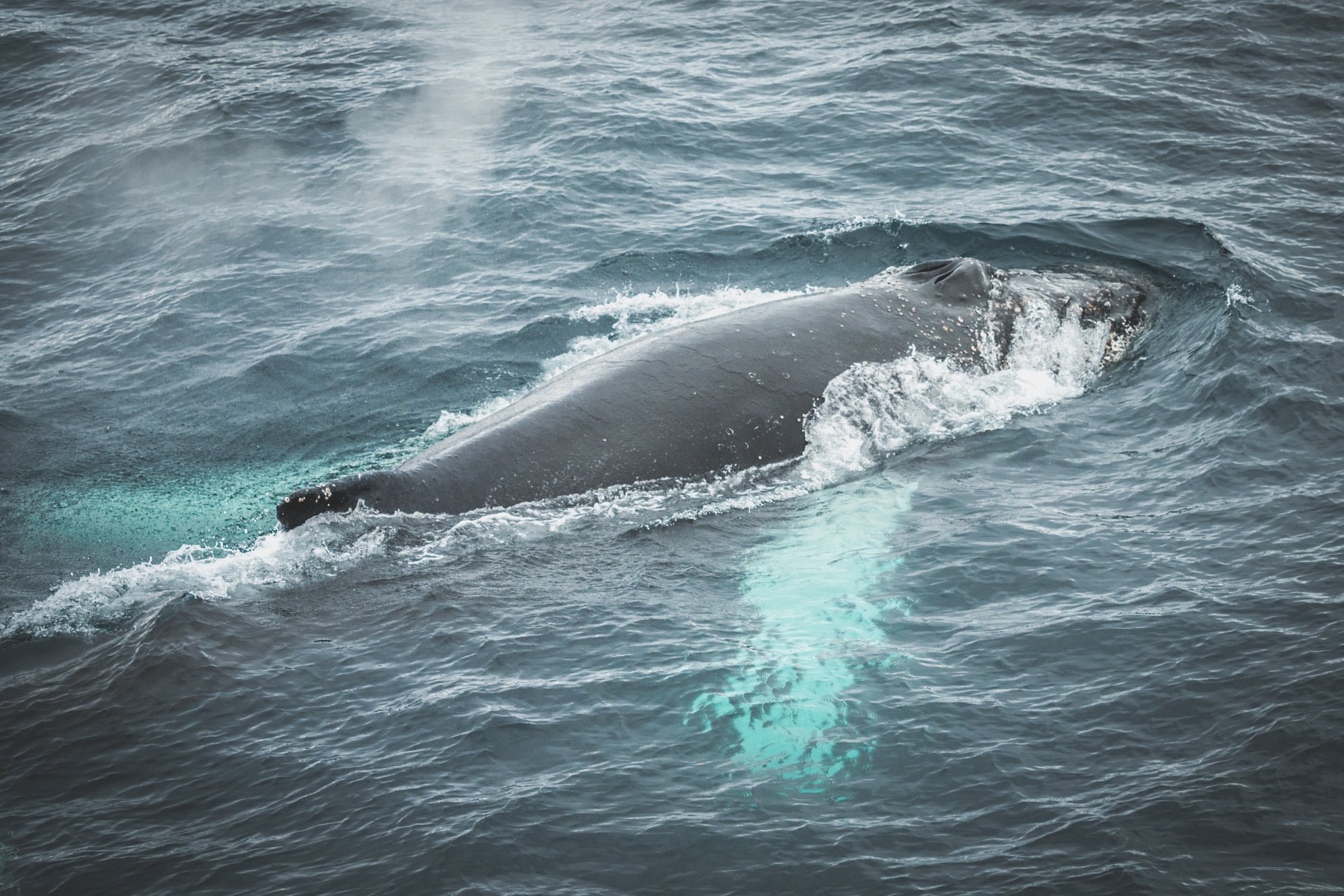How bad is the Drake Passage? Don’t fear it. Embrace it.
The Drake Passage is known to be "the most treacherous seas in the world". There is no doubt when travelers are in the planning and research stages for their trip to Antarctica, their research undoubtedly turns up the fact that to get from Argentina to the Antarctic Peninsula, you have to spend two days sailing through the Drake Passage. Sea sickness can ruin anyone's time on board a ship; and in the Drake, seasickness is a real concern. Maybe it's the fact that my last name really is Drake, or that the passage is my commute to work...but I genuinely feel that you don't need to be scared of The Drake Passage. Instead...you should embrace it. Allow me to explain.
Some might call me crazy for saying this, but half of the experience and accomplishment of your trip to Antarctica is crossing the Drake Passage. There is a sense of adventure and exploration that comes with 'surviving' the crossing. While pretty much every single passenger on board will pray to Poseidon for a smooth sailing; I feel you should have at least one rough crossing either on the way there, or the way back.
We are currently living in a world where we are now only six mouse clicks away from a photo on Facebook or Instagram to the seat of a plane. The sense of exploration and discovery has been lost with modern-day technology making travel almost...too easy. Antarctica is the most remote place on the planet. You should earn it. If getting there was easy, there would be McDonald's, Starbucks, and a Marriott on the peninsula already. Other than the pristine, untouched landscapes and abundance of wildlife, it's Antarctica's reputation for being so incredibly difficult to get to that makes it such an attractive travel destination.
A 20ft (6mt) wave breaking along the Drake Passage on the way to Antarctica.
How bad is it, you ask?
Great question! Well, it depends on the day. There is no “best time” during the Antarctic season (October-March) when the Drake Passage is better or worse. It is completely unpredictable.
You can have either a 'Drake Lake' or 'Drake Shake' as we like to call it. A Drake Lake, as you can imagine, is a smooth sailing across the passage when waves can be anywhere between 0-6ft (0-2mt). Most ships can cross the 600-mile passage in about a day and a half during these conditions.
A 'Drake Shake' on the other hand can be anywhere from 10 to 40 ft (3-15m) waves and take the full two days to cross.
On an average day, they will be somewhere around the 8-15ft (3-5m) range. This would be what some of us consider the “norm” for the Drake Passage. On extreme days, winds can blow up to somewhere around 60kt; though 10-20kt is much more common.
The Captain, Expedition Leader, and Operations team will always evaluate the conditions before any crossing and will brief the passengers prior to departing about what they can expect. This is also right about the time the ship's doctor will start handing out seasickness meds.
Photo by Neill Drake
It's important to remember that your trip doesn't start when you arrive in Antarctica.
Your expedition starts the moment you step on board the ship. During the Drake crossing, there is still plenty going on aboard the ship and each ship will have different amenities. You won't be sitting around for two days just passing the time. You will have some mandatory safety and IAATO briefings to attend, as well as a biosecurity check to make sure you're not packing a pest. Your expedition team will begin their presentations about the history, geography, geology, wildlife, and other topics to prepare you for your arrival.
The Drake Passage is also full of wildlife. You'll see a wide variety of sea birds including the possibility to see the Wandering Albatross; a bird which has the largest wingspan for any living bird in the world. The Drake is also a great opportunity to see different types of whales and dolphins.
A Humpback whale in the Drake passage on our way to Antarctica.
So why do I hope you all have at least one rough crossing? No, it's not because I take pleasure in seeing people seasick or anything like that. It's because of Antarctica's history. I could go on to write an entire article in itself about the Drake Passage's history. But to give you an idea...the first confirmed sighting of Antarctica was in 1820. Yes, 1820, though it is still heavily debated who actually spotted it first. The discovery of the Drake passage was in 1525. It was first traversed in 1616. Shackleton's expedition began in 1914. Consider the technology available to these men back then. This was the age of discovery. The age of exploration. They did it without Gore-Tex, without GPS, without satellite phones or up-to-the-minute weather reports. They did it in wooden ships without stabilizers or diesel engines. It's insane to think about what they accomplished in those times with how little they had by today's standards. Experiencing at least one rough Drake Passage crossing will put into perspective what these early explorers endured to make these discoveries. Even making the crossing in our modern day ships, albeit much safer, is something to feel a sense of pride about it.
Photo by Neill Drake
If you're ever sitting in your office or at home just wondering what's going on in the Drake, you can always visit www.Windy.com or download their app and check the current conditions.
I hope by now, you're starting to actually look forward to crossing the Drake Passage and not dreading it as much. I can't promise it'll be the most pleasant experience...but at least you'll forever be able to say "I survived the Drake Passage".
If you still have concerns, here are a couple of points and tips to help you feel better about crossing the Drake.
The ship will never attempt to cross in conditions that are even remotely questionable.
Each ship has a doctor on board who will prescribe the appropriate medicine
You're not sailing down on an old wooden sailing vessel. Modern ships have stabilizers and are designed to smoothen the ride. The effectiveness depends on the ship you're sailing on.
If you're starting to feel ill, there are some ways to feel better, quicker. It's important to stay hydrated and find a spot on the ship where you can keep your eyes on the horizon. Your brain needs to visualize the motion of the ship to connect it with what your body is feeling. Laying down and closing your eyes is the worst thing you can do. You should also find a point on the ship as low and as close to the center line as possible. This will minimize the motion.
Depending on how early you book, you can usually request a cabin in your chosen cabin category that will be as low and as close to the center line as possible. Just mention it to your booking agent, they will usually know the best option for you. Not all cabin classes will have the ideal location, but it's worth asking.
When all else fails, most ships have a fully stocked bar. Kidding...not kidding.






